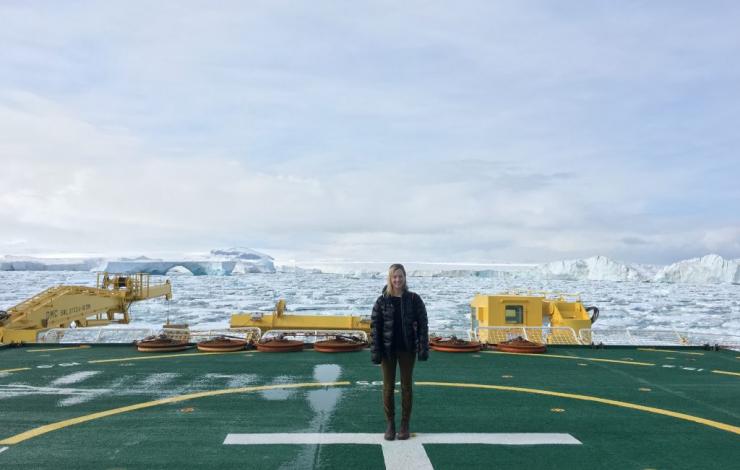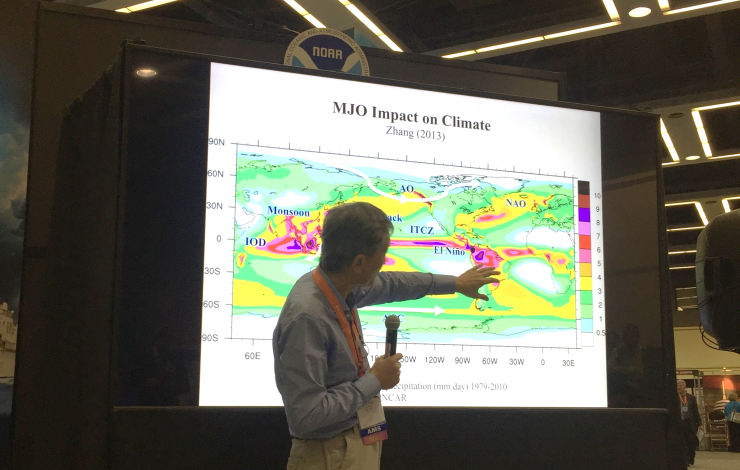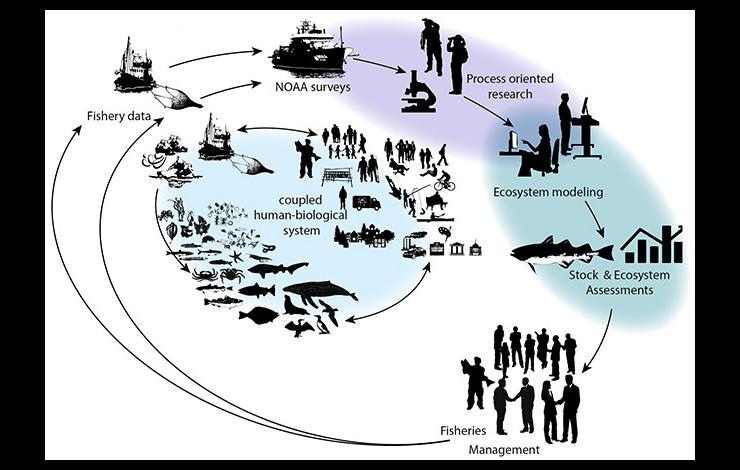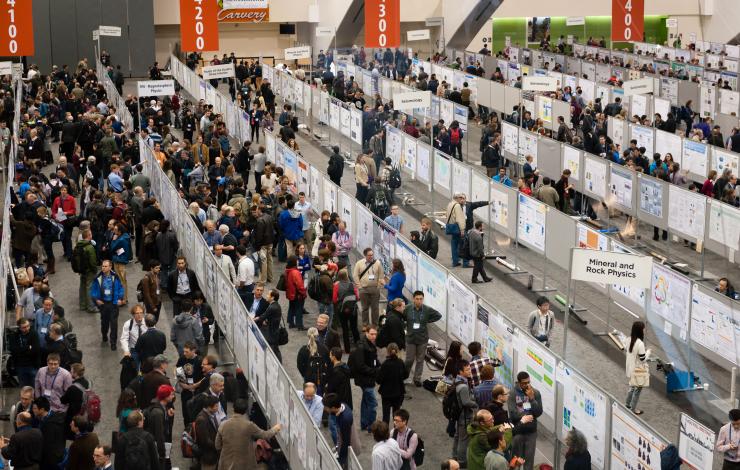What's New Archive
On February 22, 2017, Dr. Jessica Cross gave an invited presentation on ocean acidification and its potential impacts to fisheries and natural resources in Alaska to the Alaska State Legislature’s House Resources Committee. Dr. Cross was invited by Rep. Geran Tarr, Co-Chair of the House Resources Committee. The presentation covered impacts on food security and risk assessment for Alaska's fishery sector. Future projections of OA indicate imminent impacts on the Bristol Bay Red King Crab fishery, according to NOAA researchers in OAR and NMFS at the Alaska Fisheries Science Center. While in Juneau, Jessica also gave a talk to the University of Alaska, and the United Fishermen of Alaska (UFA). The Alaska Ocean Acidification Network facilitated these discussions as a way of connecting scientists like Dr. Cross to stakeholders, like UFA, and regulators at the state legislature. The Network brings together these diverse groups to identify knowledge gaps and information needs for future research and community resilience.
Dr. Cross' current research focuses on carbon biogeochemistry and ocean acidification in Arctic regions, especially along the Alaskan coast. Learn more about her work with the Innovative Technology for Arctic Exploration Group here.
From January 21 - March 2, Lauren Roche from the PMEL Acoustics Program will be aboard the R/V Araon deploying six hydrophones (shown in the image below in the Ross Sea, Antarctica. The objective of this research cruise is to use various land- and ship-based research methods to gain a thorough understanding of the Terra Nova Bay region. The PMEL Acoustics Program has been collaborating with the Korea Polar Research Institute (KOPRI) for several years on multiple projects in Antarctica. On this research cruise, Lauren will be replacing a hydrophone triad near the Drygalski Ice Tongue that was deployed last year as well as deploying a second triad in a new location further north. The data collected from these deployments will allow the Acoustics program to characterize the soundscape of the Terra Nova Bay polynya.
On February 8, Lauren successfully recovered hydrophones that likely recorded the Nansen glacier calving event. Read more about the event and the Nansen ice shelf here: http://www.esa.int/Our_Activities/Observing_the_Earth/Copernicus/Sentinel-1/Nansen_gives_birth_to_two_icebergs
Lauren Roche is a new mooring technician with PMEL Acoustics Program through Oregon State University’s Cooperative Institute for Marine Resources Studies (CIMRS). Her background is in bioacoustics and fisheries and will be deploying, recovering, and building the hydrophones for the group. Learn more about the acoustics program here.
Last week, PMEL scientists attended the American Meteorological Society (AMS)’s Annual Meeting in Seattle, WA and the Alaska Marine Science Symposium (AMSS) in Anchorage, AK. Presentations covered research in the Bering Sea, data management and access, El Nino, sea ice, the Earth's energy imbalance, innovative technologies, and recent warming in the Pacific and others.
At AMSS, the Ecosystems and Fisheries-Oceanography Coordinated Investigations (EcoFOCI) group had multiple presentations and posters on the Bering Sea including topics on the recent marine heat wave in Alaska, linking annual oceanographic processes to contiguous ecological domains in the pacific Arctic, fish distributions, ecology, Saildrone and oceanography.
A wider range of topics were covered at AMS and included invited talks from Nick Bond, Chidong Zhang and Kevin Wood. Dr. Zhang spoke about the Dynamics of the Madden-Julian Oscillation; Kevin Wood presented the Old Weather Project using historical U.S. ship logbooks to collect and analyze historical climate data; and Nick Bond discussed the recent warming in the NE Pacific. The annual meeting is the world’s largest yearly gathering for the weather, water, and climate community and brings together atmospheric scientists, professionals, students, educators and research’s from around the world. AMS is the nation’s premier scientific and professional organization promoting and disseminating information about the atmospheric, oceanic, hydrologic sciences.
Learn more about all our different research themes and groups here.
The final version of the TPOS 2020 First Report is now available on the TPOS2020 website. The report rethinks the Tropical Pacific Observing System from top to bottom. It rises to the challenge of once-in-a-generation opportunity. The report provides initial recommendations and actions that begin a process of transformation and change to an observing system that will be more capable, resilient and effective. The report provides more than 20 recommendations for the observing system and key actions for implementation. One of the key recommendations include reconfiguring the moored array with more capable moorings, targeting the equatorial circulation, the mixed layer and its interaction with the atmosphere, and key regimes.
The scientific and sponsoring members of the TPOS 2020 aim to rejuvenate and revamp the Tropical Pacific Observing System (TPOS) to meet the observational, experimental, and operational needs of today and the future. The purpose of the TPOS 2020 project is oversee the transition to a more resilient and integrated observing system to meet the identified gaps as well as future needs as they are identified
NOAA Fisheries and its partners, including the Pacific Marine Environmental Laboratory, released Regional Action Plans (RAPs) on December 16th, to guide implementation of the NOAA Fisheries Climate Science Strategy in each region (Northeast, Southeast, Gulf of Mexico, Alaska, Western, Pacific Islands). Ecosystems and Fisheries Oceanography Coordinated Investigations (EcoFOCI) program lead Phyllis Stabeno (PMEL) and Janet Duffy-Anderson (AFSC) were co-authors on the Alaska Regional Report. The Alaska Fisheries Science Center and the Pacific Marine Environmental Laboratory have the scientific infrastructure needed to produce the analyses and deliver benchmarks for the eastern Bering Sea.
This Regional Action Plan identifies key actions to address priority information needs over the next five years to better understand, prepare for and respond to climate changes in the Bering Sea ecosystem. The Regional Action Plan, part of the NOAA Fisheries Climate Science Strategy, focuses on seven science objectives.
Alaska's fisheries are worth $1.8 billion and are vital to local economies and our country's food supply. Alaska is also at the front lines of a changing marine environment. To protect and maintain the region's resources, fishermen, lawmakers and other decision-makers need information to respond to these changes and protect livelihoods and traditional cultures.The Regional Action Plan will help Alaskan communities, commercial and recreational fishermen and others who are dependent on Alaskan marine resources respond and adapt to changes that may be ahead in response to a changing climate and help ensure the sustainability of these marine resources.
Read plan highlights here.
Read the full report in the NOAA Fisheries scientific publication, Technical Memorandum.
Learn about Regional Action Plans from across the country, here.
PMEL scientists, including scientists from the University of Washington's Joint Institute for the Study of the Ocean and Atmosphere (JISAO) and Oregon State University's Cooperative Institute for Marine Resources Studies (CIMRS) are attending the American Geophysical Union (AGU)’s Annual Meeting in San Francisco this week, December 12-16. AGU's Falling Meeting is the largest Earth and space science meeting in the world bringing together the Earth and space science community for discussions of emerging trends and the latest research. Poster and talk topics include data integration, El Nino Southern Oscillation (ENSO), Indian Ocean temperature trends, hydrothermal plumes and vents, carbon dioxide in the tropics and Gulf of Alaska, aerosol research, and heat impacts on marine ecosystems and fisheries, tsunamis, and acoustic research.
The 2016 Arctic Report Card will be released Tuesday morning in conjunction with a press conference led by NOAA’s Jeremy Mathis. The 2016 Arctic Report Card brings together the work of 61 scientists from 11 nations to provide the latest information on multiple measures of Arctic environmental change, including air and sea surface temperature, sea ice, snow cover, vegetation, wildlife, and plankton abundance. Read the full report and highlights here as well as the press release. Watch the recorded press conference here.
Researchers will also present during a press conference Thursday morning some of the first scientific results from the 2015 Axial Seamount eruption including discoveries of previously unknown structures and new glimpses into the volcano’s internal plumbing. These new insights into the world’s most active and well-studied underwater volcano may help scientists better understand all volcanoes and the hazards they pose. Read the press release here. Watched the recorded press conference here.
Dr. Bob Embley from the Earth-Ocean Interactions group will be honored during the Awards Ceremony as part of the 2016 class of Fellows for his pioneering contributions to the understanding of deep-sea volcanism by fostering interdisciplinary investigations with advanced technologies.
Scientists from PMEL’s Earth Ocean Interactions (EOI) group, which includes JISAO and CIMRS, return to the Mariana back-arc on the Schmidt Ocean Institute R/V Falkor from November 29 to December 20. The Mariana back-arc is west of the Mariana Trench near Guam and is a relatively unexplored region.
This year's research cruise follows up on discoveries made last year aboard R/V Falkor and will focus on those newly discovered hydrothermal vent sites and lava flows. This cruise is part of a multi-year exploration and research project to understand the character of hydrothermal systems and biological connectivity in the Mariana region.
PMEL’s Earth Ocean Interactions (EOI) group and collaborators are the first scientists using the new Schmidt Ocean Institute’s ROV SuBastian. ROV SuBastian will provide in-depth exploration and sampling of these systems to characterize their geologic setting, chemical environment, and biological communities. This expedition is supported by Schmidt Ocean Institute, NOAA's Ocean Exploration and Research Program, and the NOAA Pacific Islands Regional Office. (Image courtesy of Schmidt Ocean Institute)
Follow live with our scientists as the ROV dives down to explore the region: https://schmidtocean.org/technology/live-from-rv-falkor/ and on Twitter #hydrothermalhunt
Dr. Carol Stepien of NOAA's Pacific Marine Environmental Lab has been named a Fellow of the American Association for the Advancement of Science (AAAS). Election as a AAAS Fellow is an honor bestowed upon AAAS members by their peers.
This year 391 members have been awarded this honor by AAAS because of their scientifically or socially distinguished efforts to advance science or its applications. New Fellows will be presented with an official certificate and a gold and blue (representing science and engineering, respectively) rosette pin on Saturday, 18 February from 8:00 a.m. to 10:00 a.m. at the AAAS Fellows Forum during the 2017 AAAS Annual Meeting in Boston, Mass.
This year’s AAAS Fellows will be formally announced in the AAAS News & Notes section of the journal Science on 25 November 2016. As part of the Section on Biological Sciences, Carol Stepien was elected as an AAAS Fellow for her distinguished contributions to the fields of molecular evolutionary ecology and conservation genetics, particularly invasive and native populations, and mentorship of graduate and undergraduate students.
The tradition of AAAS Fellows began in 1874. Currently, members can be considered for the rank of Fellow if nominated by the steering groups of the Association’s 24 sections, or by any three Fellows who are current AAAS members (so long as two of the three sponsors are not affiliated with the nominee’s institution), or by the AAAS chief executive officer. Fellows must have been continuous members of AAAS for four years by the end of the calendar year in which they are elected.

Prior to the industrial revolution CO2 was absorbed from the air by land plants, exported via rivers to the ocean and released back into the air creating a balanced cycle on time scales of centuries to millennia. Today, humans are altering this balance by releasing fossil carbon (e.g. coal, oil, natural gas). About one third of fossil CO2 is absorbed by the ocean, changing the ocean from a net source to the air, to a net sink.
Recent results published by the Global Carbon Project (GCP) earlier this month in Earth System Science Data show that global carbon emissions from burning fossil fuels did not grow in 2015 and are projected to rise only slightly in 2016, marking three years of almost no growth. The plateau in global emissions is largely the result of reduced coal use in China. However, emissions grew by 5.2% in 2015 in India, the world’s second most populous developing country, and other developing countries.
In spite of a nearly flat growth in emissions, the growth in atmospheric CO2 concentration was a record-high in 2015 and could be a record high again in 2016 due to weak carbon sinks. Carbon sinks refers to a reservoir that accumulates and stores carbon. Natural sinks are in the oceans and land plants, which typically absorb more carbon dioxide than they release. This past year, CO2 was not as readily absorbed by trees due to warm and dry conditions over tropical land caused by the recent 2015-16 El Niño event.
Atmospheric CO2 levels have exceeded 400 parts per million (ppm) and will continue to rise until emissions are reduced to near zero. This is the highest level for atmospheric CO2 in at least the last 800,000 years (See GCP Infographics for more details here).
PMEL scientists, Simone Alin, Adrienne Sutton, and Kevin O’Brien provided valuable data about CO2 in the oceans for this report. The Global Carbon Project was formed to develop a complete picture of the global carbon cycle, including the interactions and feedback between the natural and human systems.
Read the Global Carbon Budget 2016 article and highlights. To learn more, visit PMEL’s Carbon research page and the Global Carbon Project here.
Carol Stepien has recently joined PMEL as our new Ocean Environment Research Division (OERD) leader. She comes to PMEL from directing the Lake Erie Research Center at the University of Toledo. She brings with her expertise in evolutionary biology, biogeography, and conservation genetics and genomics. Her special research interests include environmental DNA, sensor networks, genomic adaptations, and bioinformatics of marine animals, fisheries, and communities.
She mentors several graduate students and postdoctoral associates and will continue to do so while at PMEL through the University of Toledo and the University of Washington’s Joint Institute for the Study of the Atmosphere and Ocean. During her time at the University of Toledo she was honored as a Distinguished University Professor of Ecology and is a 2016 nominee to become a AAAS (American Association for the Advancement of Science) fellow.
She was also active in the community and enjoys participating in outreach events. Carol serves on the Editorial Board of the journal Molecular Phylogenetics and Evolution, and is an editor for the new journal Ecological Processes and the genetics editor for the journal Biological Invasions.











